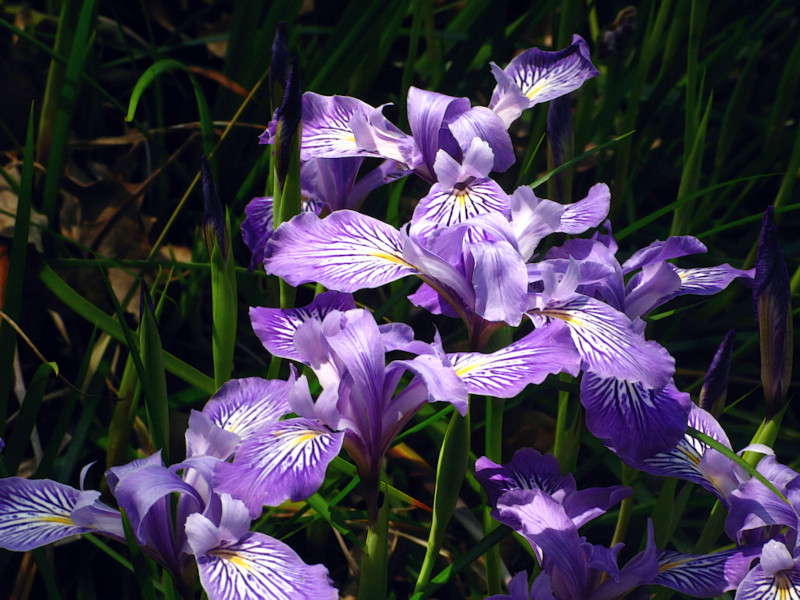
Douglas Iris Facts
- The relatively simple term of Douglas Iris serves as the most frequently used common name for this gorgeous product of natural evolution. In fact, the plant doesn’t have many other general titles by which it’s known. One of the few, though, includes the term Pacific coast iris.
- Within the scientific world, however, it’s possibly much more often referred to by its purely technical moniker. Thankfully, that’s a compartively easy one for the layperson to pronounce. That’s because the amazing flora currently bears the formal tag of Iris douglasiana.
- The delicate Angiosperm received that appellation due to the efforts of William Herbert. The highly respected British botanist accomplished the first recognition of it as a separate and distinct species. He managed that scientifically noteworthy feat in the year 1840.
- Like many of Nature’s wonders, it’s far more than just a thing of beauty, though it certainly qualifies as that, too. In times past, it played a role in the culture of the Indigenous Peoples native to its region. They used the plant for medicinal purposes and as a food source.
- Fortunately, the stunning Douglas Iris appears to be continuing to maintain a population base that’s both stable and sufficient. That pleasant state further seems to hold true throughout its entire known range. The IUCN thus does not show it on the Red List of Threatened Species.
- The species nevertheless faces the same potential threats to its continued existence as all forms of life on earth today. Most of these dangers stem from the actions of mankind. They include, among others, the closely related perils of habitat loss and ongoing climate change.
Related Articles
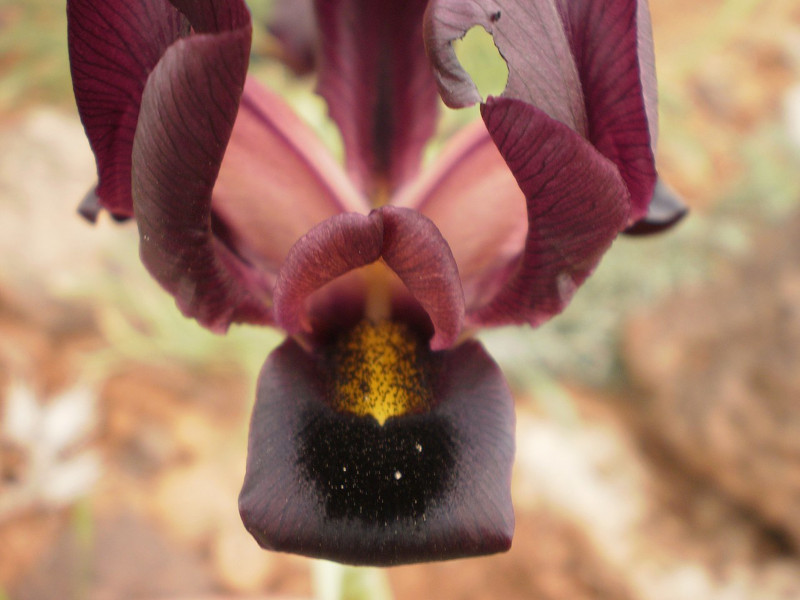

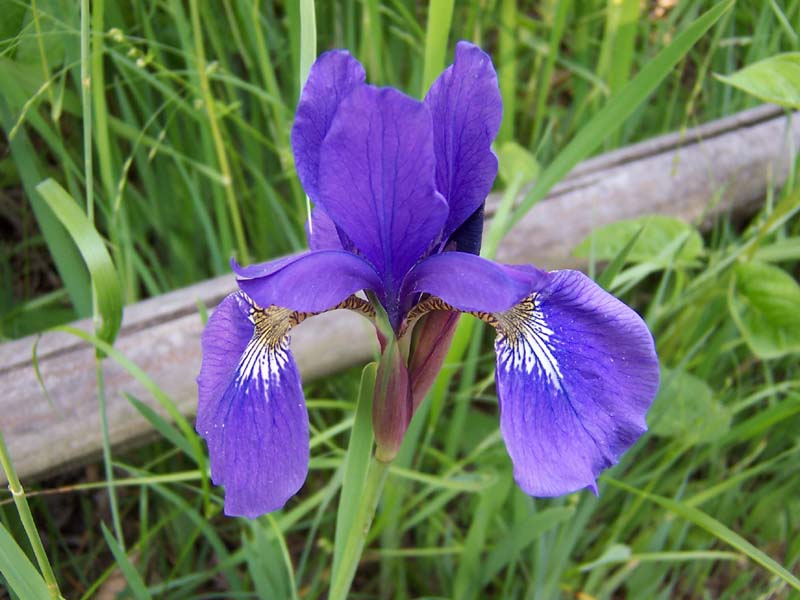
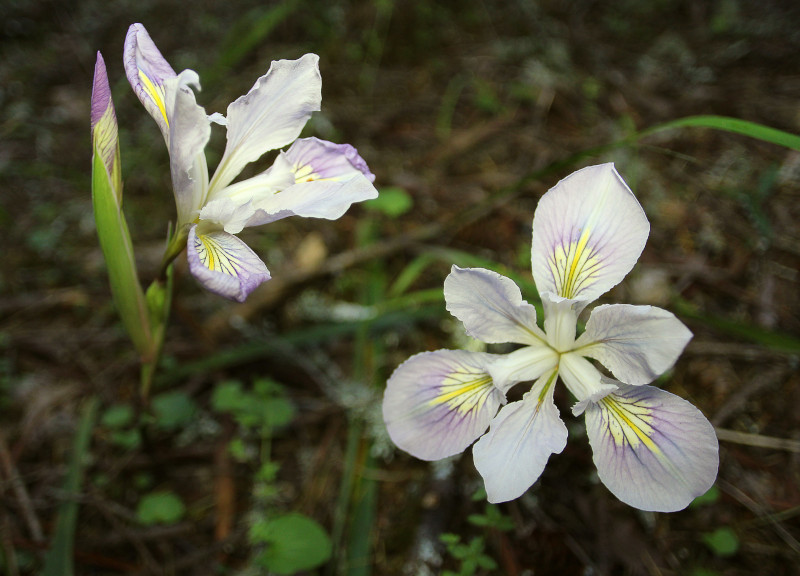
Douglas Iris Physical Description
The mesmerizing Douglas Iris, like so many of its cousins across the globe, typically captures the interest of those fortunate enough to encounter it. It tends to do so, though, more with its remarkable appearance than size. That’s due to the fact that it’s only an roughly average-sized iris.
This marvel of Nature grows from a structure called a rhizome, which is an underground stem. These features develop as relatively thick and fleshy, and serve as storage organs for the plant’s nutrients. Each serves the purpose of allowing the plant to spread and colonize new areas.
Each bloom appears at the top of a long, thin, strongly vertical stalk. This feature varies in height, depending on local conditions. On average, however, most specimens range from between 1 – 2 ft (30 – 60 cm) tall. The stalks themselves remain somewhat thin, and display a pale green shade.
The flora also develops comparatively long, slender leaves that develop as sword-shaped and typically arise from the base of the plant. These typically reach lengths of up to about 2 ft (60 cm). This distinctive foliage additionally often seems slightly pleated and displays a deep green color.
Yet, it’s the stunning flowers of the breathtaking Douglas Iris that perhaps form its most readily identifiable feature. These eye-catching blooms present themselves as relatively large and showy in nature. Each of these typically measures a respectable 2 – 4 in (5 to 10 cm) in diameter.
Each of these captivating flowers has six petals in total, with three outer petals called falls and three inner petals called standards. Its falls are often marked with intricate patterns or veining, and the colors can range from various shades of blue, violet, and purple to occasionally even white.
- Kingdom: Plantae
- Phylum: Tracheophyta
- Class: Monocots
- Order: Asparagales
- Family: Iridaceae
- Genus: Iris
- Species: I. douglasiana

Douglas Iris Distribution, Habitat, and Ecology
Lamentably, the amazing Douglas Iris evolved as indigenous to a very limited portion of the surface of the earth. The historical range of the wonder isn’t precisely documented, but it’s likely that its distribution has undergone multiple changes over time, as is the case with many plants.
Its greater zone of habitation likely won’t surprise many people. That’s because this remarkable species developed as endemic to a section of the globe already well known for its abundance of natural beauty, both flora and fauna. It evolved as native to a portion of North America.
Within the confines of that continent, however, it only grows in one very tiny section inside the confines of the United States. There, the botanical beauty makes its home in only specific portions of two states. The flora lives in southern parts of Oregon, and central and northern California, too.
This visually impressive creation of Nature and evolution demonstrates an intriguing mixture of highly specific needs and versatility in regards to its habitat choices. That’s true since it typically thrives in a broad variety of habitat types, but generally within a specific range of habitation.
It typically grows in areas such as coastal bluffs, grasslands, and open woodlands. It strongly prefers moist, well-drained soil and partial shade, though it has the ability to tolerate some sun exposure. In the wild, the flora often grows in proximity to other coastal plants like grasses and wildflowers.
The Douglas Iris primarily achieves its pollination via the actions of various types of insects, particularly bees and bumblebees. These visit the flowers for nectar and inadvertently transfer pollen between plants. This relationship remains vital for the plant’s reproduction and diversity.
After flowering, it produces seed capsules containing numerous small seeds. These are dispersed by various means, including wind, water, and animals. Some of these get carried away by wind currents, while others achieve dispersal by flowing water or attached to the fur or feathers of animals.
Species Sharing Its Range
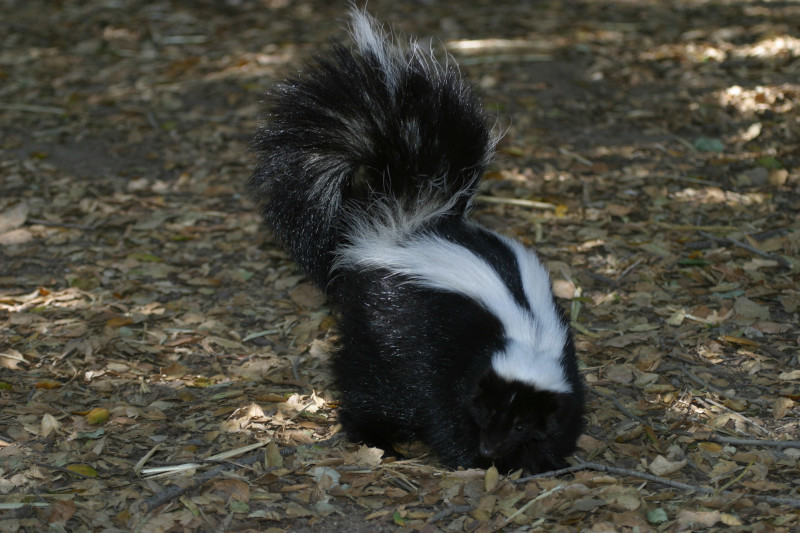
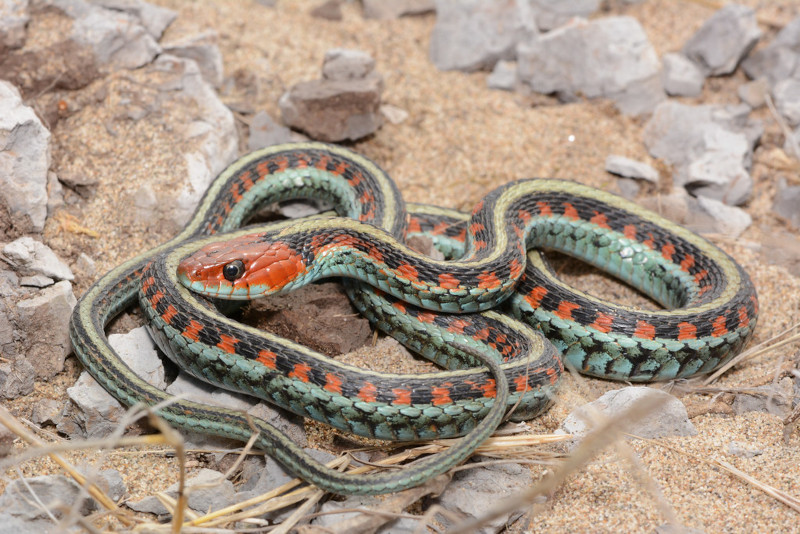
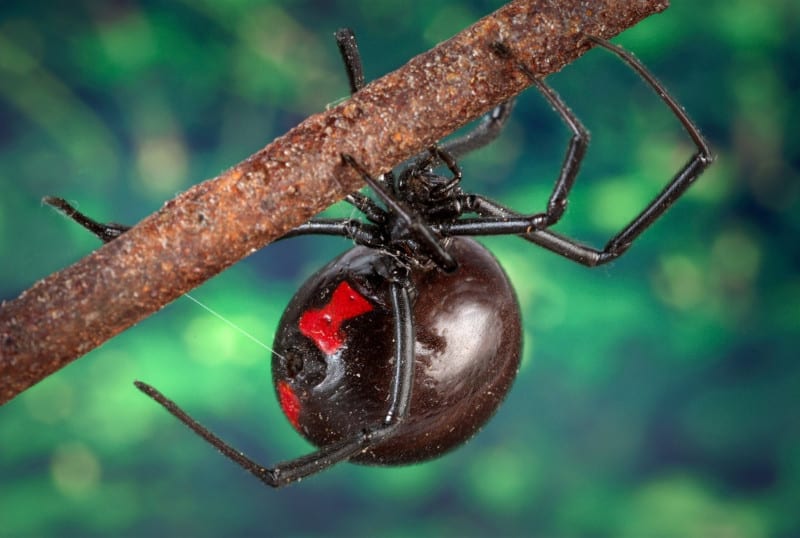
Check out our other articles on 4 Delightful Desert Plants, Guiana Dolphin, Perito Moreno Glacier, Japanese Beetle, Southern Stingray, Vietnamese Mossy Frog, Mahé, Orinoco Crocodile









Leave a Reply